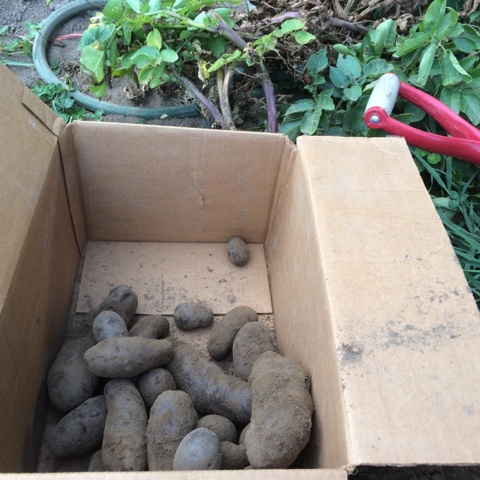We woke up this morning to snow on the hills around us; quite suddenly, the weather we need is here. It's been an agonizingly warm fall, with early November rolling from 60-degree day to 60-degree day with 45-degree nights between. I don't usually agonize over day- and nighttime highs and lows, but to butcher pigs without a walk-in-size refrigerator, the nights must be between 32 and 40 degrees. So we agonized, and the 45-degree nights stretched seemingly endlessly from early September until now.
At last, there is snow and cold (and even maybe too much cold, the irony of which I cannot bear), and we are ready to go. Tomorrow.
***
Our two pigs are bordering on gargantuan these days. They've lived out a luxurious life in the woods near our house, feasted on organic grain and hundreds and hundreds of pounds of apples and pears (a steady stream since August). When I feed them in the mornings, I catch myself analyzing their legs and bellies. There's some serious ham and bacon under there. I'm only a little sad to see them go. All along, their purpose has been to live well, get huge, and end up in our kitchen. To us, it is a very satisfying and rich process. In these days of mass-produced and mass-slaughtered meat, of animals raised in tight and terrible quarters, of impersonal vacuum-sealed packages of flesh, this is something different.
I have found there's nothing like raising your own animals to inspire passion against the commercial meat industry.
And, true, to generate a lot of work.
***
It's been two years since our last pig slaughter on Vashon, with our friends John and Bri. Since, we've butchered a lamb, a ewe, and two goats, plus a lot of chickens, but pigs feel like another level, another realm. Not only because our process over the next three days includes a 20-gauge shotgun, a tractor, a chain hoist, a 55-gallon food-grade barrel, a propane burner, our sharpest carbon-steel knives, two KitchenAid mixers, a sausage grinder and stuffer. There's the complexity of the kill and stick, and the precise 150-degree temperature of the scald for scraping, and the 12-page cut sheet detailing our butchering goals to deliver pork to my aunt and uncle, parents and sister, our own freezer, and our charcuterie room.
Did I mention we are tackling 12 different charcuterie recipes, from pate and smoked bacon to coppa and prosciutto?
My project-management brain has been in high gear.
I am hoping and praying that our preparations and discussions and, yes, mishaps and miscommunications over the last two months will give us a solid framework for the next three days of work--so we can relax, let our rehearsing take over, and dig into the work together. I deeply want to be able to savor the process with Tim and everyone who comes to help.
Then, Sunday, we can rest. And eat pork chops.




















































